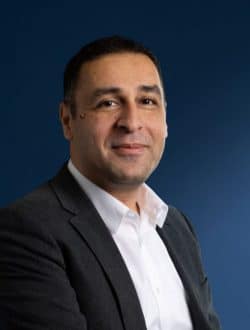Biography
Tarek Djerafi received the B.Sc. degree from the Institut d’Aeronautique de Blida, Blida, Algeria, in 1998, and the M.A.Sc. and Ph.D. degrees (Hons.) in electrical engineering from the École Polytechnique de Montréal, Montréal, QC, Canada, in 2005 and 2011, respectively. He was with SCP SCIENCE, Montréal, as an EMC Expert from 2010 to 2011, a PostDoctoral Fellow with INRS-EMT, Montréal, from 2012 to 2014, and with École Polytechnique de Montréal from 2014 to 2015. He was a Research Associate with the Poly-Grames Research Center, Montréal, from 2015 to 2016. He is currently an Associate Professor with the Institut National de Recherche Scientifique, Énergie Matériaux et Télécommunications, Montréal. His current research interests include the telecommunication antennas, beam forming networks, and RF/millimeter-wave/terahertz components and systems design.
Presentations
Adaptive and Reconfigurable Components at Millimeter-Wave Frequencies: Design and Integration Challenges
The next generation of communication systems will be shaped by two fundamental design principles: flexibility and integration. Flexibility allows systems to meet stringent frequency and power requirements under varying operating conditions, while integration ensures compactness, efficiency, and scalability. Reconfigurable circuit and system responses are particularly valuable for compensating aging effects and temperature variations in sensitive circuits. Addressing these needs requires innovative designs for reconfigurable low-power receivers and transmitters, adaptive power amplifiers, multimode integrated passive components, and switches with improved isolation and reduced insertion loss.
Traditionally, active components have been realized using low-cost planar structures such as microstrip lines and coplanar waveguides (CPW). However, this transmission line/active device integration suffers from major limitations at millimeter-wave and terahertz frequencies, including radiation losses, fabrication tolerances, and impedance control challenges. These constraints explain why much of today’s research on reconfigurable components remains focused on lower microwave frequencies.
This talk will emphasize the necessity and advantages of smart millimeter-wave components for enabling adaptive systems that dynamically optimize performance under changing conditions. Special attention will be given to substrate integrated waveguide (SIW) technology, in combination with various reconfigurable mechanisms such as diodes, liquid crystals, and ferrites. In addition to surveying the state of the art, the presentation will explore solutions to key challenges in design, fabrication, and characterization, with a focus on biasing networks, integration strategies, and practical implementation issues.
